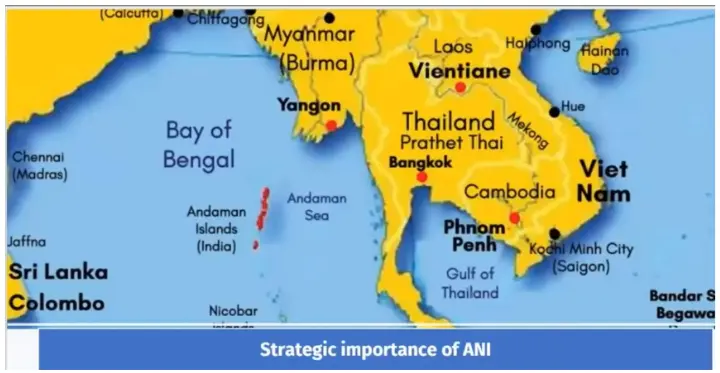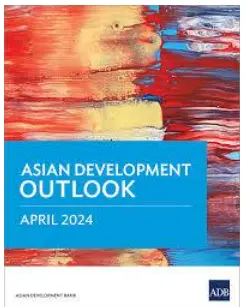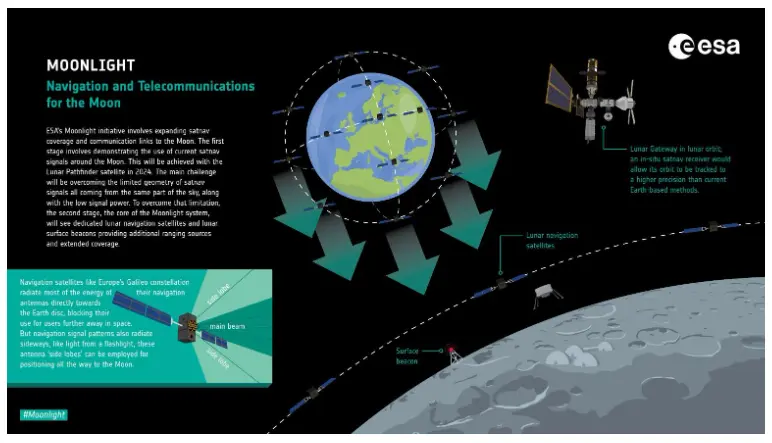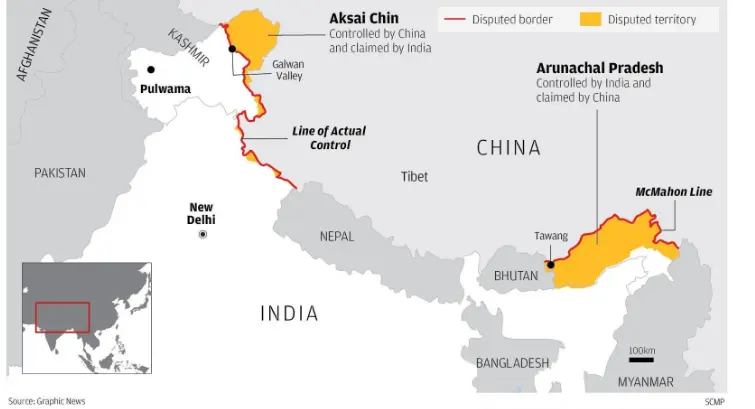Friday, 19th April 2024
Challenges and Needed Reforms in India's Municipal Elections
In News: The recent ruling by the Supreme Court regarding the Chandigarh mayoral election brings to light once again the issues linked with the electoral procedures of local urban bodies.
Introduction
- The recent Supreme Court ruling on the Chandigarh mayoral election has brought attention to the electoral processes of local urban bodies in India, highlighting persistent challenges in conducting timely elections and ensuring smooth transitions of power.
Legal Provisions for Local Bodies’ Elections
- Constitutional Provisions stipulate that the State Election Commission (SEC) holds the responsibility of overseeing the electoral rolls preparation and conduct of all elections to the panchayats and municipalities.
- The 74th Constitutional Amendment Act mandates a five-year tenure for urban local governments and prohibits court interference in municipal electoral matters.
- However, there have been instances of delays and inconsistencies in adhering to these mandates.
Status of Municipal Elections in India
- According to the Annual Survey of India’s City-Systems 2023 by Janaagraha’s, over 1,400 municipalities in India lacked elected councils as of September 2021.
- The Comptroller and Auditor-General of India (CAG) revealed that between 2015 and 2021, over 1,500 municipalities did not have elected councils.
- Major cities like Chennai, Delhi, Mumbai, and Bengaluru have faced significant delays in holding elections, ranging from months to years.
Challenges Associated with Local Bodies' Elections
- Discretionary Powers: Ambiguous constitutional safeguards grant government officials discretionary powers in scheduling elections, leading to inconsistent or delayed election timelines.
- Undue Influence: Concerns exist regarding undue influence by state governments to delay elections for political reasons, potentially undermining the democratic process.
- Reliance on Manual Processes: Continued reliance on manual ballot paper-based processes introduces vulnerabilities such as counting errors, tampering risks, and result declaration delays.
- Delayed Formation of Councils: Even after elections, prompt constitution of municipal councils in urban local governments has been lacking, leading to governance gaps.
Possible Solutions Regarding Local Bodies’ Elections
- Empowering SECs: State Election Commissions should be empowered to oversee the electoral process more effectively, including conducting ward delimitation.
- Ward Delimitation Empowerment: Only 11 out of 35 states and union territories have empowered SECs to conduct ward delimitation, a crucial aspect for fair representation.
- Accountability Mechanisms: Establishing transparent investigation processes and disciplinary actions to hold election officials and authorities accountable for delays or irregularities.
- Policy Reforms: Comprehensive policy reforms are needed, including exploring the "One Nation, One Election" concept with a focus on timely and efficient local body elections.
Conclusion
- Comprehensive reforms are imperative for India's municipal elections, addressing delays, enforcing constitutional mandates, empowering State Election Commissions, and modernizing electoral processes to ensure transparency, fairness, and accountability.
|
UPSC Previous Year Questions Prelims (2017) Q. Consider the following statements:
Which of the statements given above is/are correct? (a) 1 and 2 only (b) 2 only (c) 2 and 3 only (d) 3 only Ans: (d) Mains (2022) Q. Discuss the role of the Election Commission of India in the light of the evolution of the Model Code of Conduct. |
Source: TH
Ensuring Protection from Climate Change Impacts
In News: The recent acknowledgment by the Supreme Court of India recognizes the right to protection from climate change impacts as integral to the fundamental rights to life (Article 21) and equality (Article 19) enshrined in the Indian Constitution.
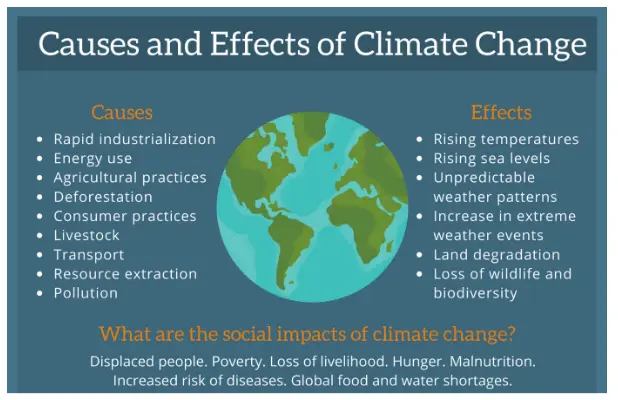
Intersection of Climate Change and Human Rights: Implications, Challenges, and Path Forward
Introduction:
The intersection of climate change and human rights raises significant implications, challenges, and the need for a coherent path forward.
Implications of Climate Change on Human Rights:
- Right to Life and Livelihood: Climate-induced extreme weather events like hurricanes and floods pose threats to life and property, especially in low-lying coastal areas.
- Access to Clean Water and Sanitation: Climate change impacts water sources, leading to scarcity and contamination, affecting the right to clean water and sanitation.
- Health and Well-being: Increased heatwaves and changes in weather patterns exacerbate health problems, impacting the right to health and overall well-being.
- Migration and Displacement: Climate-induced events force people to migrate or be displaced, intersecting with human rights such as the right to residence and seek asylum.
- Indigenous Peoples' Rights: Indigenous communities disproportionately affected by climate change due to reliance on natural resources for livelihoods and cultural practices.
Supreme Court's Interpretation of Constitutional Provisions Concerning Climate Change:
- Constitutional Provisions: Articles 48A, 51A(g), and 21 recognize the right to a clean environment, wildlife conservation, and life and personal liberty, respectively.
- MC Mehta vs Kamal Nath Case, 2000: The Supreme Court extends the right to a clean environment as an extension of the right to life.
Challenges in Balancing Climate Change Mitigation with Human Rights Protection:
- Trade-offs: Some climate mitigation measures may conflict with human rights, necessitating solutions that minimize negative impacts.
- Access to Resources: Climate actions can impact access to essential resources like energy, water, and food, especially for marginalized communities.
- Environmental Migration: Climate-induced migration strains social systems and leads to conflicts over resources and rights in host communities.
- Adaptation vs. Mitigation: Balancing efforts to reduce emissions with investments in adaptation poses challenges, particularly for vulnerable communities.
- International Cooperation: Balancing national climate goals with global responsibilities while ensuring the protection of rights across borders is complex.
Path Forward:
- Human Rights-Based Carbon Pricing: Implementing a carbon tax with progressive rebates to offset the impact on low-income households.
- Green Technology Transfer and Capacity Building: Facilitating the transfer of green technologies to developing countries at affordable rates.
- Human Rights Impact Assessments: Conducting thorough assessments before implementing climate change strategies to ensure the protection of human rights.
Conclusion:
Addressing the intersection of climate change and human rights requires concerted efforts, including legal interpretations, policy interventions, and international cooperation, to safeguard rights while mitigating climate risks.
|
UPSC Previous Year Questions Prelims (2020) Q. Other than the Fundamental Rights, which of the following parts of the Constitution of India reflect/ reflects the principles and provisions of the Universal Declaration of Human Rights (1948)?
(a) 1 and 2 only (b) 2 only (c) 1 and 3 only (d) 1, 2 and 3 Ans: (d) Prelims (2017) Q. With reference to ‘Global Climate Change Alliance’, which of the following statements is/are correct?
Select the correct answer using the code given below: (a) 1 and 2 only (b) 3 only (c) 2 and 3 only (d) 1, 2 and 3 Ans: (a) Mains (2021) Q.1 Describe the major outcomes of the 26th session of the Conference of the Parties (COP) to the United Nations Framework Convention on Climate Change (UNFCCC). What are the commitments made by India in this conference? Mains (2017) Q.2 ‘Climate Change’ is a global problem. How will India be affected by climate change? How Himalayan and coastal states of India will be affected by climate change? |
Source: IE
Green Credit Programme
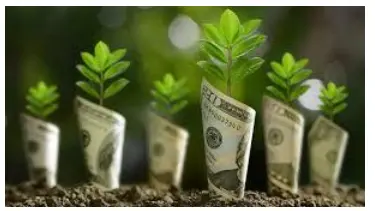
Understanding the Green Credit Programme (GCP)
- Introduction:
- The Green Credit Programme (GCP) is an initiative introduced by the Indian Prime Minister during COP 28 in Dubai, UAE, as part of the Lifestyle for Environment (LiFE) movement.
- Key Initiatives under the GCP:
- Conceptualization within the LiFE Movement:The LiFE movement, initiated by the Indian PM during COP26 in Glasgow, aims to foster global awareness and action towards mindful environmental utilization.
- Market-Based Approach: The GCP adopts a market-based approach to incentivize eight identified environmental activities, promoting positive environmental actions.
- Objective: The primary objective of the GCP is to establish a mechanism wherein participants can earn incentives in the form of 'Green Credits' for engaging in environmental activities.
Implementation Strategy:
- Phased Implementation: The GCP will be rolled out in phases, starting with a focus on water management and afforestation in the initial phase.
- Subsequent Phases: Future phases will encompass activities such as sustainable agriculture, waste management, air pollution reduction, mangrove conservation, eco-label development, and sustainable building and infrastructure.
Green Credit Rules, 2023:
- Enactment: The Green Credit Rules, 2023, were notified on October 12, 2023, under the Environment Protection Act, 1986.
- Encouraging Positive Actions: These rules aim to encourage voluntary environmental actions through the issuance of green credits.
- Initial Phase Activities: The initial phase involves voluntary tree plantation on degraded and waste lands under the supervision of Forest departments.
Implementation Progress:
- State Participation: Forest departments from 13 states have offered 387 land parcels totaling nearly 10,983 hectares for restoration.
- Application Process: Individuals and companies can apply to the Indian Council of Forestry Research and Education (ICFRE) to contribute towards restoring these forests.
Utilization of Green Credits:
- Trading Mechanism: The green credits are tradable and can be utilized to comply with forest laws or for reporting under environmental, social, and governance norms.
- Carbon Emissions Reduction: Credits generated from emission reductions can also be utilized to obtain carbon credits.
Concerns and Guideline Amendments:
- Tradeability of Green Credits: The latest guidelines specify that green credits are tradable, contrary to previous understandings.
- Minimum Tree Density Requirement: The Ministry has delegated the specification of minimum tree density requirements to the states for reforested landscapes.
Source: TH
Sikkim's 2023 Glacial Lake Outburst Floods
In News: The Sikkim government has notified the National Green Tribunal (NGT) that an unusually high amount of heavy rainfall, potentially indicative of a cloudburst, preceded the occurrence of the glacial lake outburst flood (GLOF) event at the South Lhonak lake.

Understanding the National Green Tribunal (NGT)
- Introduction:
- The National Green Tribunal (NGT) was established in October 2010 under the National Green Tribunal Act 2010 to expedite the resolution of cases related to environmental protection and conservation.
- Key Features of NGT:
- Specialized Body: It is a specialized body equipped with the necessary expertise to handle environmental disputes involving multi-disciplinary issues.
- Structure and Members:
- The Principal Bench of the NGT is located in New Delhi, with regional benches in Pune, Bhopal, Chennai, and Kolkata.
- The Chairperson is a retired Judge of the Supreme Court, while other members include retired Judges of High Courts and Expert Members with expertise in environmental conservation.
- Powers of NGT:
- The NGT is not bound by the procedures of the Code of Civil Procedure, 1908, and is guided by principles of natural justice.
- It endeavors to dispose of applications or appeals within six months of filing.
- The Tribunal has jurisdiction over civil cases related to environmental issues and laws listed in Schedule I of the NGT Act.
- Limitations:
- The NGT does not have jurisdiction over matters related to the Wildlife (Protection) Act, 1972, the Indian Forest Act, 1927, and various state laws concerning forests.
Understanding Glacial Lake Outburst Floods (GLOFs)
- Introduction:
- Glacial lakes, formed by melting glaciers, pose a risk of outburst floods known as GLOFs when their boundaries fail, releasing large volumes of water downstream.
- Key Points about GLOFs:
- Formation of Glacial Lakes
- Glacial lakes are formed by meltwater filling depressions left by retreating glaciers.
- They are categorized into ice-contact lakes and distal lakes, based on their proximity to glaciers.
- Causes of GLOFs
- GLOFs can be triggered by factors such as glacial calving, avalanches, or landslides that destabilize the boundaries of glacial lakes.
- Susceptibility of South Lhonak Lake to GLOF
- Rapid glacier melting in the Sikkim Himalayas has led to the formation and expansion of glacial lakes.
- South Lhonak Lake, along with several others, has been identified as vulnerable to GLOFs due to weakened boundaries, possibly exacerbated by seismic activity and heavy rainfall.
Understanding North East Space Application Centre (NESAC)
- Introduction:
- NESAC, established in 2000 in Umiam, Meghalaya, is a regional space center jointly initiated by the Department of Space (DOS) and the North Eastern Council (NEC) to support the development of the North Eastern Region (NER) using space technology.
- Key Features of NESAC:
- It leverages space science and technology to provide developmental support and address the unique challenges faced by the North Eastern Region.
- NESAC plays a crucial role in facilitating various developmental projects and initiatives in the NER through the application of space-based technologies.
Source: IE
National Consumer Disputes Redressal Commission
In News: Recently, the Supreme Court (SC) has issued notice to two members of the National Consumer Disputes Redressal Commission (NCDRC), asking them to provide an explanation for their actions.
Overview of the National Consumer Disputes Redressal Commission (NCDRC)
- The National Consumer Disputes Redressal Commission (NCDRC) is a quasi-judicial body established in India in 1988 under the provisions of the Consumer Protection Act of 1986.
- Its primary mandate is to offer inexpensive, swift, and concise resolution of consumer disputes, with its headquarters located in New Delhi.
- The Commission is led by either a sitting or retired Judge of the Supreme Court or a sitting or retired Chief Justice of a High Court.
- NCDRC holds jurisdiction over complaints valued at more than two crore and also exercises appellate and revisional jurisdiction over orders issued by State Commissions or District fora.
- The Consumer Protection Act covers both 'goods' and 'services,' where goods refer to products manufactured or produced and sold to consumers through wholesalers and retailers, and services encompass various sectors such as transport, telephone, electricity, housing, banking, insurance, and medical treatment.
- Eligibility to file a claim includes any individual who has purchased goods for consideration and discovers defects in quality, quantity, potency, purity, or standard, or who has availed services for consideration and encounters faults, imperfections, shortcomings, or inadequacies in quality, nature, or manner of performance.
- However, individuals who have purchased goods for resale or commercial purposes are not considered consumers, and complaints cannot be filed for alleged deficiencies in services rendered free of charge or under a contract of personal service.
- Complaints may be filed by consumers, voluntary consumer associations registered under the Companies Act 1956, the Central Government or any State Government, or by one or more consumers where multiple consumers are affected.
- Any person dissatisfied with an order issued by NCDRC has the option to appeal against such an order to the Supreme Court within 30 days.
Source: LL
Ashwagandha
In News: The popularity of Ashwagandha is on the rise, both within India and internationally.

Overview of Ashwagandha
- Ashwagandha, also known as Indian ginseng or Indian winter cherry, is an evergreen shrub indigenous to India, northern Africa, and the Middle East.
- Scientifically termed Withania somnifera, the plant earned its name Ashwagandha due to its roots emitting an odor resembling that of a wet horse ('ashwa' for horse and 'gandha' for smell).
- It belongs to the Solanaceae family, commonly known as the nightshade family, which also includes tomatoes and potatoes.
- Benefits of Ashwagandha:
- Medicinal Use: Ashwagandha has been utilized as a medicinal plant for centuries, particularly in traditional Ayurvedic medicine.
- Adaptogenic Properties: It is often referred to as an adaptogen, aiding the body in adapting to stressors and restoring equilibrium.
- Health Benefits: Ashwagandha is associated with various health benefits such as reducing inflammation, boosting energy levels, alleviating anxiety, relieving pain, and enhancing sleep quality.
- Bioactive Compounds: Different parts of the ashwagandha plant, including the roots, leaves, and berries, may contain varying concentrations of bioactive compounds.
- Withanolides: Notably, withanolides are naturally occurring steroid compounds found in ashwagandha, known for their beneficial antioxidant and anti-inflammatory properties.
Source: BL
Iron Age
In News: Archaeologists recently announced the discovery of a distinctive Iron Age megalithic site situated at Ooragutta near Bandala village in SS Tadvai mandal of Mulugu district, Telangana.

Overview of the Iron Age
- Definition and Timeline:
- The Iron Age, succeeding the Stone Age and Bronze Age, commenced between 1200 B.C. and 600 B.C., varying by region.
- It was a significant period in human history, occurring in Africa, Europe, and Asia during prehistoric times.
- Geographical Distribution:
- The Iron Age was prevalent in Africa, Europe, and Asia, constituting the Old World.
- It did not extend to the Americas due to the geographical distinction as the New World, which had not yet been discovered.
- Introduction of Iron:
- Iron was discovered during this era, supplanting bronze as the preferred metal for various purposes.
- Its introduction brought about notable transformations in people's lives and technological advancements.
- Ironworking Origins:
- The genesis of ironworking can be traced back to Turkey, from where it disseminated to other parts of Europe.
- Impact on Agriculture:
- Iron tools, such as the 'ard' (iron plow), revolutionized farming practices, enhancing efficiency compared to wooden or bronze implements.
- Military Advancements:
- Iron swords and weapons replaced their bronze counterparts, leading to the formation of formidable armies.
- The proliferation of iron weaponry rendered armies more resilient and facilitated conquests of new territories.
- Technological Developments:
- The Iron Age witnessed advancements in various technologies, including the construction of forts, bridges, and improvements in pottery and weaving.
- Deep mining operations were initiated to extract valuable minerals like salt.
- End of the Iron Age:
- Being a period of prehistory, the Iron Age concluded with the widespread adoption of writing.
- Despite its conclusion, iron remains a prevalent material for crafting tools, weapons, and various structural components in modern times.
Source: TH
Tachyons
In News: Recently, physicists put forward a groundbreaking concept suggesting that tachyons, a theoretical type of particle perpetually traveling faster than light, may be the primary component of our universe.
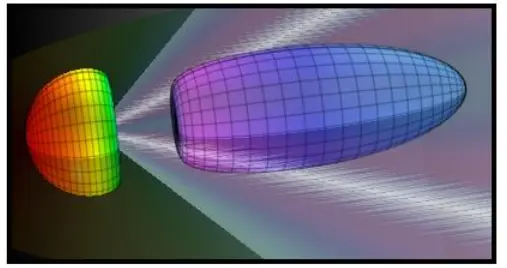
Exploring Tachyons: Hypothetical Subatomic Particles
- Tachyons are theoretical subatomic particles believed to move faster than the speed of light.
- The term "tachyon" was introduced by physicist Gerald Feinberg in 1967.
- Tachyons are distinct from "bradyons," which are particles that travel slower than the speed of light.
- Unlike bradyons, such as protons, electrons, and neutrons, tachyons have never been observed.
- According to the principles of special relativity, particles with mass cannot attain or surpass the speed of light in a vacuum due to the infinite energy requirement.
- However, tachyons are hypothesized to possess imaginary mass, suggesting that their squared mass is negative, potentially allowing them to exceed the speed of light without violating known physical laws.
- The behavior of tachyons is theorized to involve slowing down as they gain energy and accelerating as they lose energy.
- Experimental attempts to detect tachyons have been made using a device called a cerenkov detector.
- A cerenkov detector measures the speed of particles traveling through a medium.
- While particles cannot travel faster than light in a vacuum, they can potentially exceed the speed of light in other mediums.
- When a particle moves through a medium at a velocity greater than light for that medium, it results in cerenkov radiation, analogous to phenomena like a sonic boom from an airplane surpassing the speed of sound or a ship's bow shock wave.
Source: LS
The Great Indian Bustard and climate action verdict
In News: A recent article delves into the recent ruling by the Supreme Court concerning climate change and underscores its ramifications for the preservation of the Great Indian Bustard species.

Overview of the Great Indian Bustard (GIB)
- The Great Indian Bustard (Ardeotis nigriceps) is India's most critically endangered bird and the state bird of Rajasthan.
- It represents the health of grassland ecology and is mainly found in Rajasthan and Gujarat, with small populations in Maharashtra, Karnataka, and Andhra Pradesh.
Protection Status of GIB
- Critically Endangered according to the International Union for Conservation of Nature (IUCN) Red List.
- Listed under Appendix I of the Convention on International Trade in Endangered Species of Wild Fauna and Flora (CITES).
- Classified under Schedule 1 of the Wildlife (Protection) Act, 1972.
Challenges and Vulnerabilities
- Faces threats such as collision with power lines, hunting, and habitat loss due to agricultural expansion.
- Slow-reproducing species with year-long parental care of chicks.
- Grassland habitat in areas like the Cholistan desert poses risks due to proximity to international borders.
Recent Updates on GIB Conservation
- Public Interest Litigation (PIL) in Supreme Court (SC)
- Filed in 2019 seeking conservation measures for GIB.
- Interim ban on overhead power lines imposed by SC.
- SC Order in M.K Ranjitsinh Versus Union of India
- Blanket ban on overhead power lines recalled.
- Expert committee formed to assess feasibility of conservation measures.
Implications of SC Order
- Expanding Environmental Jurisprudence
- SC's decision broadens the scope to include climate justice and environmental equity.
- Recognition of Climate Change and Human Rights
- Acknowledges the right against adverse climate impacts.
- Shift towards Renewable Energy
- Emphasizes the need to transition from coal to solar for energy security.
Concerns and Considerations
- Over-Emphasis on Renewable Energy
- Raises concerns about environmental and social impacts of aggressive renewable energy promotion.
- Balancing Conservation and Development
- Highlights the need for a holistic approach to balance GIB conservation with renewable energy goals.
Conservation Efforts for GIB
- Species Recovery Programme
- Involves artificial incubation of GIB eggs to increase population.
- Installation of Bird Diverters
- Mandated by SC to prevent collisions with power lines.
- National Bustard Recovery Plans
- Coordinated efforts by the Government of India to conserve GIB habitat.
Conclusion
- Intersection of Justice and Climate Action
- Recognizes the need for climate-specific legislation to protect both human rights and biodiversity.
- Hope for Conservation
- Aims to ensure a future where citizens are free from climate impacts, and GIBs can thrive in their natural habitat.
|
UPSC Previous Year Questions Prelims (2012) Q. Which one of the following groups of animals belongs to the category of endangered species? (a) Great Indian Bustard, Musk Deer, Red Panda and Asiatic Wild Ass (b) Kashmir Stag, Cheetal, Blue Bull and Great Indian Bustard (c) Snow Leopard, Swamp Deer, Rhesus Monkey and Saras (Crane) (d) Lion-tailed Macaque, Blue Bull, Hanuman Langur and Cheetal Ans: (a) Prelims (2020) Q. With reference to India’s Desert National Park, which of the following statements are correct?
Select the correct answer using the code given below: (a) 1 and 2 only Ans: (c) |
Source: TH
Share the article
Edukemy’s Current Affairs Quiz is published with multiple choice questions for UPSC exams
MCQ
Get Latest Updates on Offers, Event dates, and free Mentorship sessions.

Get in touch with our Expert Academic Counsellors 👋
FAQs
UPSC Daily Current Affairs focuses on learning current events on a daily basis. An aspirant needs to study regular and updated information about current events, news, and relevant topics that are important for UPSC aspirants. It covers national and international affairs, government policies, socio-economic issues, science and technology advancements, and more.
UPSC Daily Current Affairs provides aspirants with a concise and comprehensive overview of the latest happenings and developments across various fields. It helps aspirants stay updated with current affairs and provides them with valuable insights and analysis, which are essential for answering questions in the UPSC examinations. It enhances their knowledge, analytical skills, and ability to connect current affairs with the UPSC syllabus.
UPSC Daily Current Affairs covers a wide range of topics, including politics, economics, science and technology, environment, social issues, governance, international relations, and more. It offers news summaries, in-depth analyses, editorials, opinion pieces, and relevant study materials. It also provides practice questions and quizzes to help aspirants test their understanding of current affairs.
Edukemy's UPSC Daily Current Affairs can be accessed through:
- UPSC Daily Current Affairs can be accessed through Current Affairs tab at the top of the Main Page of Edukemy.
- Edukemy Mobile app: The Daily Current Affairs can also be access through Edukemy Mobile App.
- Social media: Follow Edukemy’s official social media accounts or pages that provide UPSC Daily Current Affairs updates, including Facebook, Twitter, or Telegram channels.

